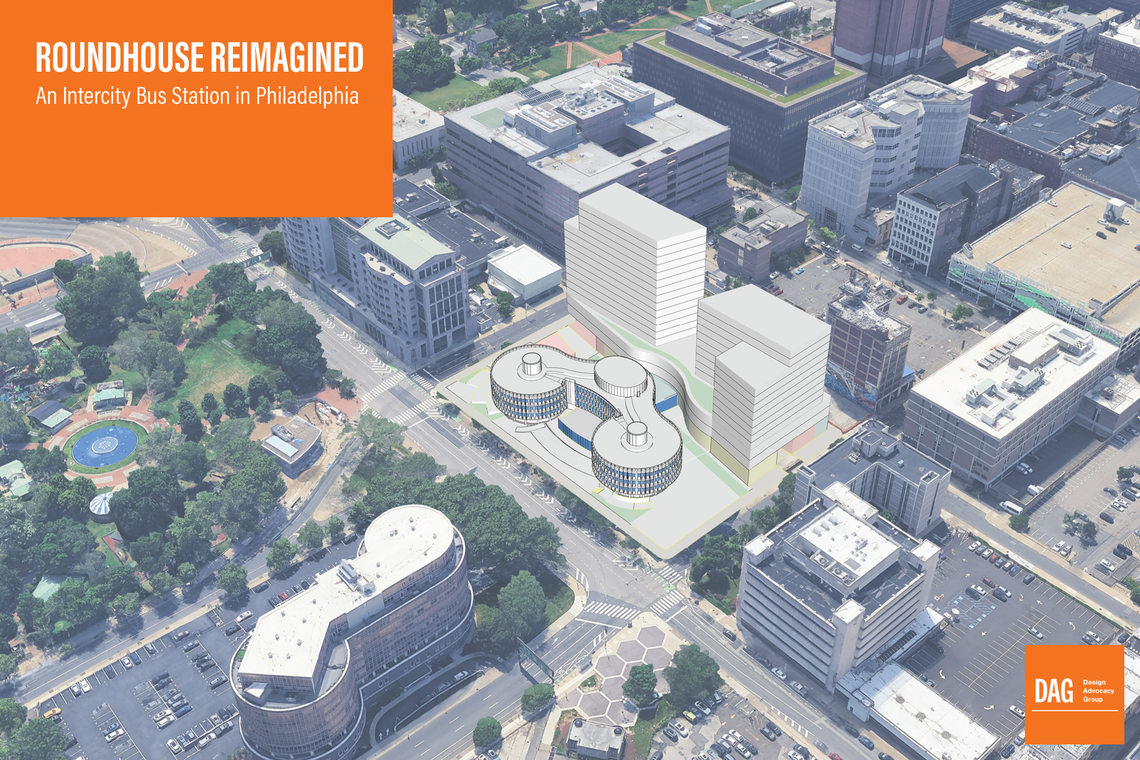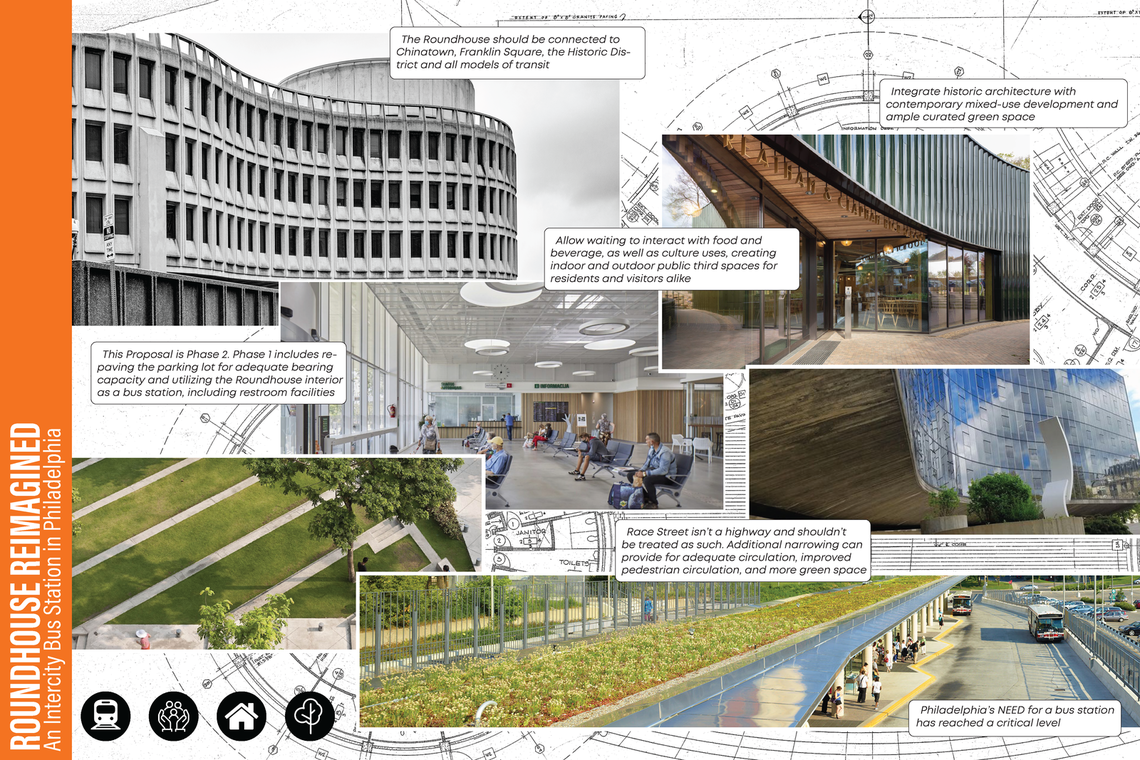Bus Station
When he met with the DAG community in March of 2025, Jessie Lawrence, the city’s director of planning and development, accurately described the arrival to any transit hub, like a bus station, airport or train station as a visitor’s handshake with a new city.
He’s right. Buses serve a significant swath of the population from long-distance travelers to those looking to make quick trips up and down the Northeast Corridor, and everyone in between. We have world-class facilities at Philadelphia International Airport and 30th Street Station. Continuing with stop gap measures that lack humanity for bus travelers is not an option.
We have studied many sites, as have others. For any bus terminal to be successful, we believe that the primary criteria that must be met are:
-
Minimal travel distance between the interstate highway system and the site, limiting city street disturbance and congestion.
-
Proximity to additional public transit options, such as regional rail, subway, and city bus routes.
-
The ability to provide the critical amenities, such as restrooms, shelter, food and beverage, and storage lockers.
Such sites exist, with the city-owned Roundhouse as a prime example. With a global focus on Philadelphia right around the corner, Philadelphia could move bus operations to the Roundhouse in the short term (Phase 1) with minimal work to repave the parking lot and clean up building’s interior, while a longer-term, mixed-use development strategy including a terminal (Phase 2), like the one we have proposed, will provide bus passengers with comfort and dignity, and Philadelphia with a vital piece of infrastructure of which we can be proud.
With Philadelphia looking forward to hosting the world next year for our nation’s 250th anniversary, any solution that resembles the current conditions on Spring Garden Street where visitors who arrive by bus and are dumped onto a remote sidewalk is unacceptable. That is no way to welcome someone to Philadelphia and hardly the handshake we should be extending as we look to show off the best of our city.
To keep the focus on cultural uses and maintain the levels of transparency and activity, the location of the bus station is proposed beneath the new mixed-use development, not in the Roundhouse proper, providing a separation of uses, though with significant mixing of visitors in the lobby pavilion and gallery/connector.






